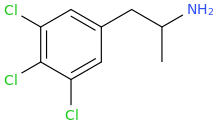Even if the aromatic ring of benzodioxoles contributes to more stability due to delocalized electrons, that doesn't actually show how well benzodioxoles hold up in an acid. MDX compounds are probably too short a time in the stomach for it to be a serious matter, and it seems from that other reference that its cytochrome enzymes anyway that metabolize the methylenedioxy if the acetal wasn't hemi'd already.
MDX compounds may hold up a bit better in plain water, but I think acetals do fine already. So not quite sure if someone is saying that benzodioxoles are as an exception incredibly stable and we shouldn't consider them in the acetal discussion but that doesn't seem to be true. Or perhaps relatively speaking it is - according to what aced said, or adder somewhere.
Either way, if you must paste potentially unstable moieties in your designed drug, at least be sensible and reinforce it with pi bonds around it.
It seems the would-be amph analogues drawn earlier could be stable 'enough' given the same advantages, again as long as it's active enough to afford loss from our acidic stomachs and bodily enzymes.












